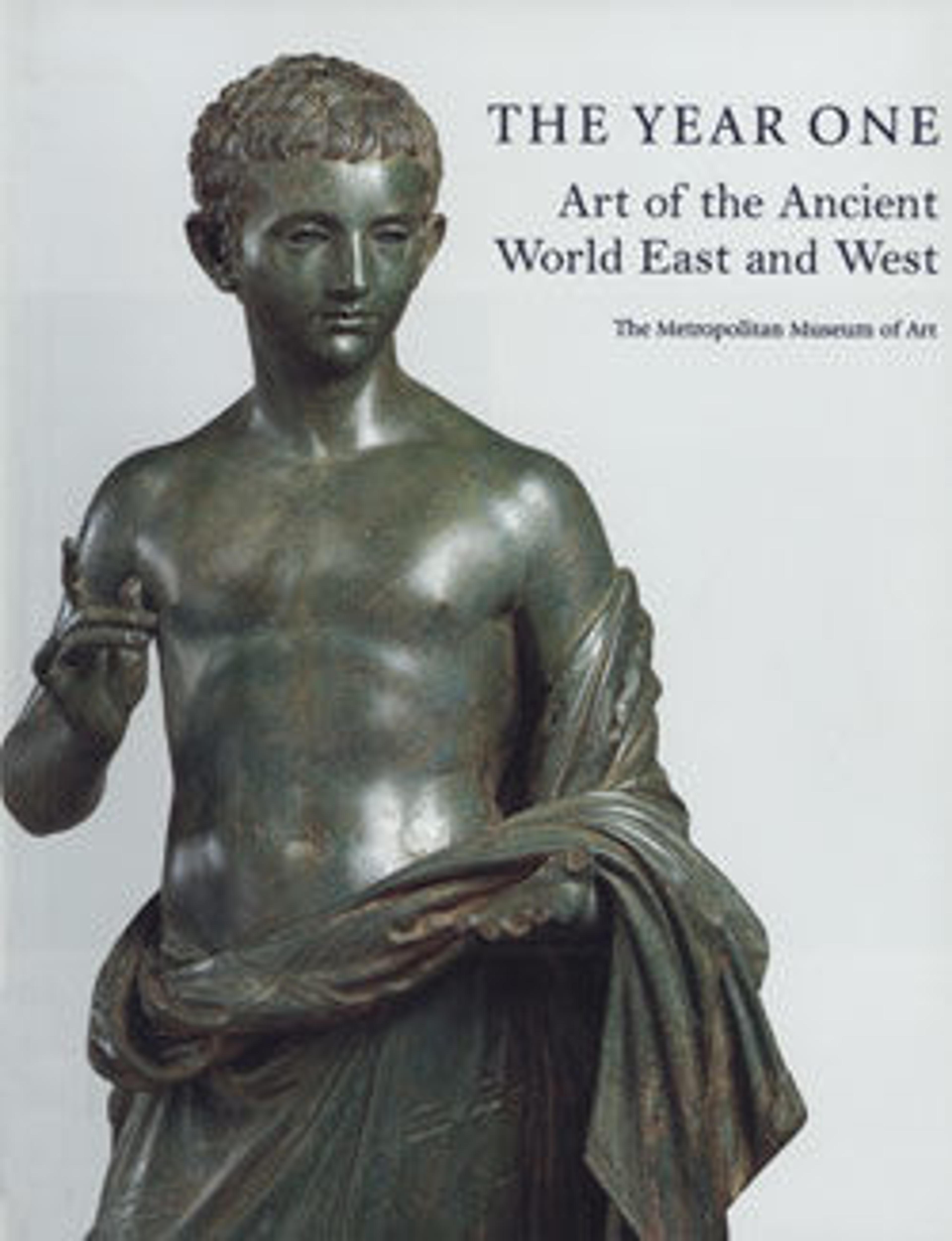Wing Brooch
This richly decorated brooch, wrought in silver, is an exceptional example of a type of brooch made in the Roman border province of Pannonia, on the Danube River. These objects are called "wing brooches" because of the winglike extensions that flank the knob at the bend of the bow. On this work, the knob is decorated with a zigzag pattern, and the two wings are adorned with two small knobs. A punchwork design extends from the knob along the length of the bow. As is typical of the few other surviving examples of this quality, the large, trapezoidal catch plate is covered with gold foil, except where it is pierced with elaborate patterns. Twisted gold wire laid down in wavy lines and scroll-and-heart motifs decorate the foil. Four carnelians frame the two intricate openwork patterns near the tip of the catch plate—one of linked circles and one of linked hearts. Rounded and rosette-shaped silver studs also ornament the surface. Except for minor losses to the gold foil, the brooch is complete and in excellent condition. On the basis of burial and pictorial evidence, wing brooches like this one were worn by women in pairs, on the shoulder, with the intricately pierced catch plates protruding above their robes, creating a relatively delicate, patterned effect.
Artwork Details
- Title: Wing Brooch
- Date: 100–200
- Geography: Made in Pannonia
- Culture: Roman
- Medium: Silver, gold, and four carnelians
- Dimensions: Overall: 7 11/16 x 1 15/16 x 1 9/16 in. (19.6 x 4.9 x 3.9 cm)
- Classification: Metalwork-Silver
- Credit Line: Purchase, Alastair B. Martin, William Kelly Simpson, Scher Chemicals Inc., Levy Hermanos Foundation Inc., Shelby White, and Max Falk Gifts, in honor of Katharine R. Brown, 1998
- Object Number: 1998.76
- Curatorial Department: Medieval Art and The Cloisters
More Artwork
Research Resources
The Met provides unparalleled resources for research and welcomes an international community of students and scholars. The Met's Open Access API is where creators and researchers can connect to the The Met collection. Open Access data and public domain images are available for unrestricted commercial and noncommercial use without permission or fee.
To request images under copyright and other restrictions, please use this Image Request form.
Feedback
We continue to research and examine historical and cultural context for objects in The Met collection. If you have comments or questions about this object record, please contact us using the form below. The Museum looks forward to receiving your comments.
